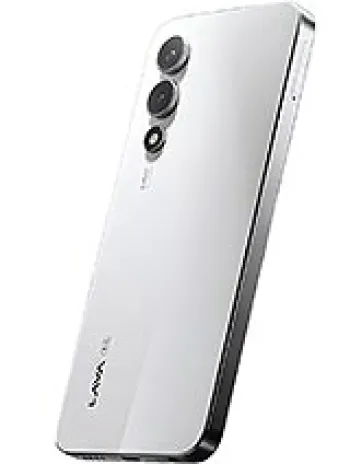
Overview of Lava Iris Fuel 50
The Lava Iris Fuel 50 was announced and released in October 2014. Known for its emphasis on battery life, the device aimed to cater to users who prioritized long-lasting power over top-tier specifications. Despite being discontinued, it remains a notable entry in the budget segment of its time, offering a competitive blend of features such as a decent camera, dual SIM capabilities, and expandable storage.
Design and Build
The Lava Iris Fuel 50 measures 144.8 x 72.9 x 9.5 mm and weighs 160 grams, rendering it somewhat bulky but manageable in terms of daily use. The device supports dual SIM capabilities, a feature notably beneficial for users managing multiple networks or traveling frequently. Its black finish, a standard color option, gives it a sleek appearance.
Display
The smartphone sports a 5.0-inch IPS LCD display, accounting for approximately 70.5% of the screen-to-body ratio. With a resolution of 480 x 854 pixels, the display is adequate for typical usage scenarios like browsing, multimedia consumption, and basic app usage. However, compared to later models, the pixel density and overall clarity might feel outdated.
Platform and Performance
Lava Iris Fuel 50 runs on Android 4.4.2 KitKat, a version that was considered contemporary at the time of its release. Under the hood, the device is equipped with a quad-core 1.3 GHz processor. Coupled with 1GB of RAM, it offers satisfactory performance for basic multitasking and running standard applications. The limitations become apparent with more resource-intensive apps and games, where the hardware struggles to keep up.
Camera Capabilities
For photography enthusiasts on a budget, the Lava Iris Fuel 50 offers an 8 MP autofocus rear camera with dual-LED flash, suitable for capturing moments in decent lighting conditions. It can record videos as well, which meets the basic needs of most users during its era. Additionally, the 2 MP selfie camera serves for casual video calls and self-portraits, though it lacks advanced features.
Battery Life
The standout feature of the Lava Iris Fuel 50 is undoubtedly its battery life. Housing a Li-Po 3000 mAh removable battery, it offers impressive longevity with up to 370 hours of standby time and up to 17 hours of talk time on 2G and 13 hours on 3G networks. This makes it a solid choice for users in need of a reliable phone without frequent charging interruptions.
Memory and Storage
The device comes with 8GB of internal storage, which was modest even at the time of its release. Storage capacity can be expanded thanks to the microSDHC card slot—a notable addition allowing users to store more apps, photos, and media files. The 1GB RAM, however, places limitations on the device's multitasking efficiency.
Network and Connectivity
Connectivity features include support for GSM/HSPA networks, with 2G bands such as GSM 850/900/1800/1900 and a 3G band of HSDPA 2100. Connectivity options like Wi-Fi 802.11 b/g/n and Bluetooth 4.0 with A2DP, LE ensure fundamental wireless communication. The presence of GPS aids in navigation, whereas the exclusion of NFC may deter those requiring it for near-field communications.
Audio and Multimedia
The Lava Iris Fuel 50 includes a standard loudspeaker and a 3.5mm headphone jack, adhering to the essential audio requirements of the user base it targeted. The inclusion of an FM radio is a valuable addition for enthusiasts of on-the-go radio listening.
Additional Features
While the sensor selection is minimal, comprising only an accelerometer and proximity sensor, it covers the basic interactive needs. More advanced sensor functionalities found in premium smartphones are not present here.
Conclusion
Despite being a device from 2014, the Lava Iris Fuel 50 remains a noteworthy mention in the landscape of early budget smartphones. It managed to balance usability and battery life effectively, albeit with compromises in processing power and display craftsmanship. For users prioritizing operational longevity on a tight budget, it was an option worth considering during its active market period. Although discontinued, its lesson in balancing quality and performance within financial reach remains relevant in today's influx of budget-friendly smartphones.
Key Features of Lava Iris Fuel 50
- Dual SIM capability for better connectivity.
- IPS LCD display ensuring clear and vibrant visuals.
- 5.0-inch screen providing a comfortable viewing experience.
- Powered by a Quad-core 1.3 GHz processor for efficient performance.
- Expandable storage with a microSDHC card slot.
- 8 MP rear camera with autofocus and dual-LED flash for better photos.
- 2 MP front camera for selfies and video calls.
- Comes with Android 4.4.2 (KitKat) operating system.
- Strong battery life with a 3000 mAh removable battery.
- Bluetooth 4.0, GPS and FM radio support.
- Includes essential sensors like accelerometer and proximity.
- Affordable pricing at around 100 EUR.
Disadvantages of Lava Iris Fuel 50
- Discontinued model: The device was announced and released in 2014, and it is no longer available on the market.
- Low display resolution: The 480 x 854 pixels resolution on a 5.0-inch screen results in a relatively low pixel density.
- Old operating system: Runs on outdated Android 4.4.2 (KitKat).
- Limited internal storage: Comes with only 8GB of internal storage, with approximately 1GB of RAM, which is insufficient for modern applications and multitasking.
- Basic camera features: The 8 MP main camera and 2 MP selfie camera are modest by today's standards, lacking advanced features like higher resolution sensors or stabilization options.
- Lack of modern connectivity features: No support for NFC and uses microUSB 2.0 instead of the newer USB-C.
- Limited sensor options: Only includes basic sensors like accelerometer and proximity, lacking advanced sensors found in modern smartphones.


View Also
More Phones
All Rights Reserved +14266 Phones © Mobilawy 2025

























